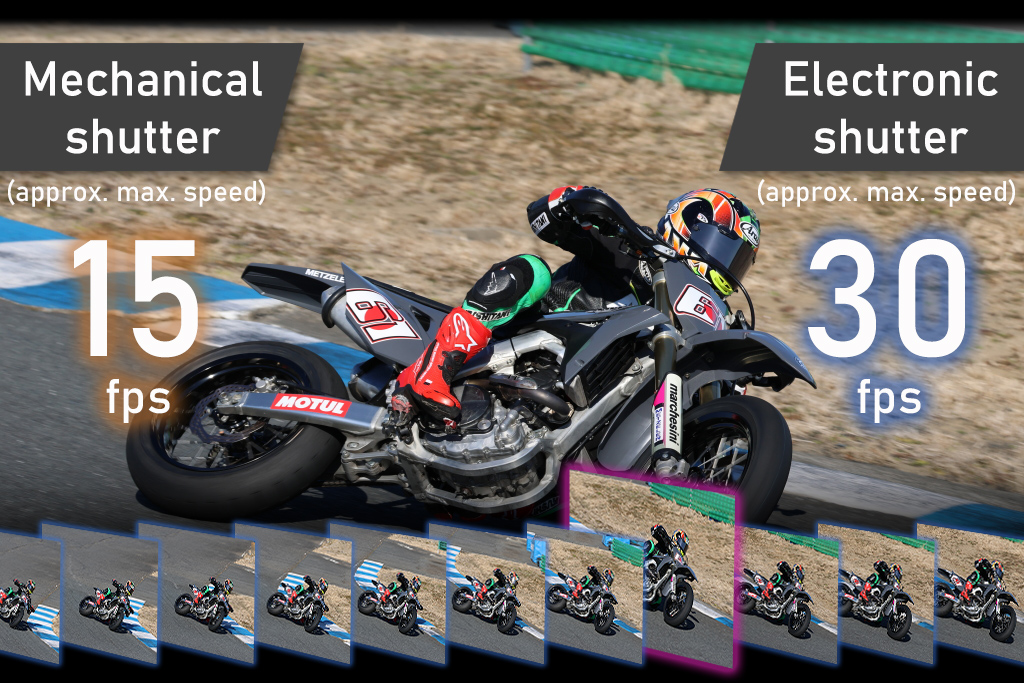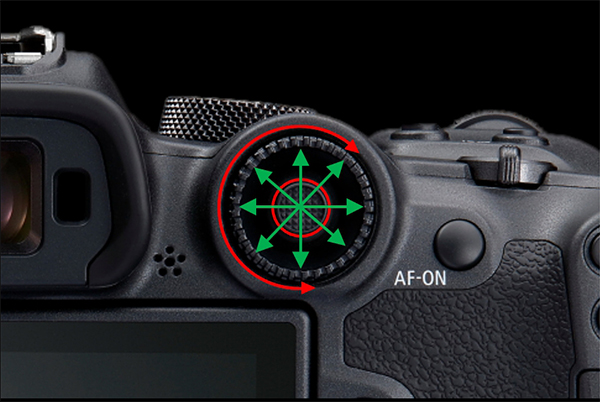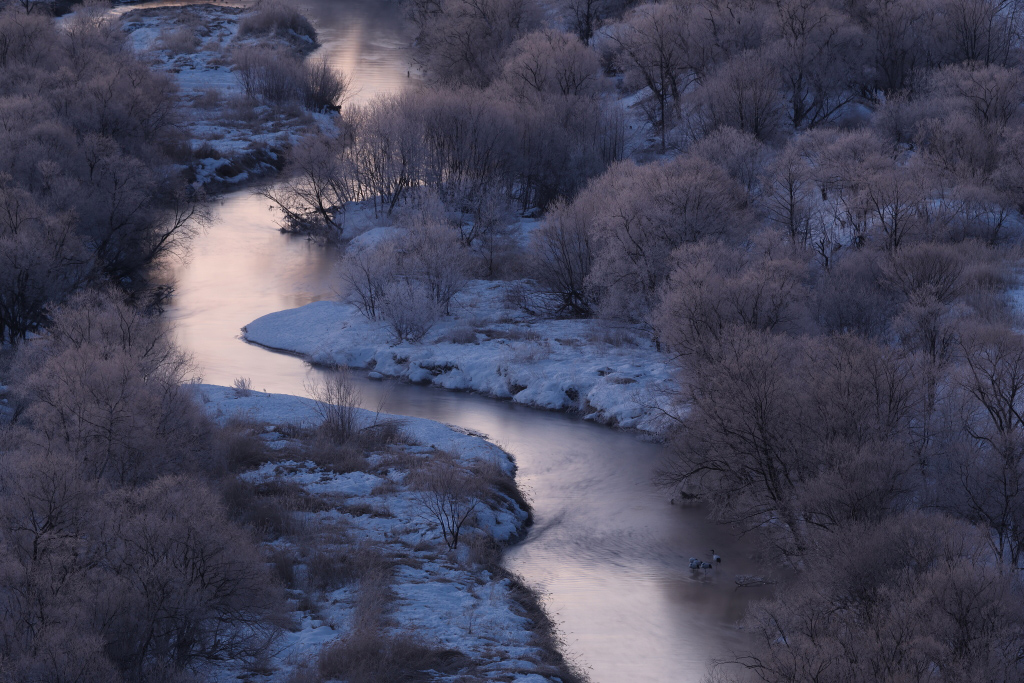EOS R7: Canon’s Fastest, Highest-Resolution EOS APS-C Camera
On 24 May 2022, Canon announced the EOS R7, its first EOS R system camera to feature an APS-C-size image sensor. Small, compact, and high on mobility due to the advantages of its sensor size and the mirrorless camera system, the camera also boasts features that put it nearly on par with cameras designed for professional use, such as up to 30 fps high-speed continuous shooting and deep learning-based advanced subject recognition and tracking capabilities. It is a camera poised to capture attention, especially for photographers seeking a compact, fast, and power-packed camera system. Read on to find out why.

Power, speed, and resolution in a smaller, lighter body
The best of three worlds: Compactness, speed, and high resolution
The EOS R7 is the first camera in the EOS R system to be equipped with an APS-C format image sensor. While it is theoretically in the same class as the DSLR EOS 90D, it features a new, improved core, including the DIGIC X image processing engine, which can make advanced calculations at high speed, and a newly developed Dual Pixel CMOS image sensor with 32.5 effective megapixels.
Together, they give the EOS R7:
- The highest resolution performance in the history of EOS APS-C camera models
- High-speed continuous shooting and AF precision nearly on par with professional EOS camera models
- Improved video performance: Higher quality 4K UHD video through 7K oversampling, Canon Log 3, HDR PQ recording, and other features that cater to professional video production needs.
One of the biggest advantages of the APS-C image sensor has always been how it enables producing smaller, lighter camera bodies. Leveraging on this, the EOS R7 allows users to enjoy still photography and videography with a lighter load than before.

Fastest continuous shooting speed in the EOS R system
Up to 15 fps: The fastest mechanical shutter continuous shooting speed in the EOS R system
One of the most outstanding features of the EOS R7 is its outstanding high-speed continuous shooting capabilities. In mechanical shutter mode, it achieves up to 15 fps with AF/AE tracking1, made possible by the mirrorless mechanism (which removed the need for mirror movement), the adoption of high torque motors, a new charge structure for the first and second shutter curtains, and an optimised shutter drive sequence. Close to the 16 fps possible on the EOS-1D X Mark III flagship DSLR camera, the high-speed continuous shooting capabilities of the EOS R7 are the fastest in the entire EOS R series.
In electronic shutter mode, the EOS R7 shoots at up to 30 fps with AF/AE tracking—on par with the professional class EOS R32.

Flickerless shooting and shutter speed
The mechanical shutter mode of the EOS R7 supports flickerless shooting, counteracting 100Hz/120Hz flicker. Shutter speeds as fast as 1/8,000 second (mechanical shutter) and 1/16,000 second (electronic shutter) are also supported3. Besides the greater capacity to freeze fast-moving subjects in the moment, such fast shutter speeds allow more control over exposure, such as in strong sunlight when you need to use the widest aperture of a fast lens to shoot portraits with a shallow depth of field.
1The actual continuous shooting speed depends on various factors such as battery type/remaining charge, temperature, built-in Wi-Fi (‘On’ or ‘Off’), flicker reduction, shutter speed, aperture value, type of lens, etc. For more information, please refer to the user manual.
2 The AF calculation cycle is different from that on the EOS R3.
3 Flash photography is not supported in electronic shutter mode. Depending on the subject and shooting conditions, rolling shutter distortion may occur.
Full-resolution RAW Burst mode with pre-shooting function
RAW burst mode: Full-resolution RAW image sequences, pre-shooting supported
The RAW burst mode4 uses the electronic shutter to record a sequence of RAW images shot at up to 30 fps in one single file. While these images were cropped (recorded using only part of the sensor) on the EOS M6 Mark II, they are recorded as 14-bit RAW data using the full 32.5-megapixel sensor resolution on the EOS R7. If pre-shooting is enabled, the camera records images from up to 0.5 second before the shutter button is fully pressed. Each frame captured in RAW burst mode can be post-processed just like normal RAW image files—you can either extract the best frame to export it as an individual RAW image, or convert it into a JPEG or HEIF file and export it as such.
4 SD card with Speed Class 10 or above is recommended. Normal recording may not be possible if the battery level is low or the SD card has a slow writing speed,
Note: Interval required between consecutive RAW burst sequences: approx. 25 sec on a normal SD card (UHS-I); approx. 11 sec on high-speed cards (UHS-II).
Advanced deep learning-based subject detection and tracking
Subject detection and tracking enhanced by deep learning
The EOS R7 features the same deep learning-enhanced EOS iTR AF X subject detection and tracking system found on the higher-end EOS R3. The advanced capabilities of this system support autofocusing (AF) during still image and video shooting.
There are four subject detection priority modes:
- People
- Animals
- Vehicles
- Off
In People Priority mode, humans in the frame are prioritised, but if there are no humans in frame, the camera detects animals and vehicles.
In Animal Priority mode, animals (cats, dogs, and birds) are prioritised, but if there are no animals in frame, humans are detected. In Vehicle Priority mode, vehicles and people can both be detected. The system also detects helmets and motorcycle riders to track open-type vehicles with better accuracy.
The EOS R7’s human detection AF capabilities can recognise the eyes, face, head, and torso of a human subject.

Its animal detection capabilities can recognise the eyes, face, and full body of cats, dogs, and birds.

Its vehicle detection capabilities can detect motorsports vehicles (two-wheel and four-wheel drives).
The subject detection capabilities of EOS iTR AF X on the EOS R7 are equivalent to those on the EOS R3. Find out more in the following article
Subject detection via deep learning; tracking via EOS iTR AF X
Up to 100% AF coverage; inherits EOS R3’s unique AF concept
Up to 100% AF coverage: Acquire focus on subjects anywhere within the image frame
The EOS R7 uses the Dual Pixel CMOS AF II system, where every single pixel on the image sensor is equipped with two photodiodes to perform both imaging and phase difference detection. This achieves high image quality and high precision autofocusing without any pixel interpolation.
AF can be conducted over up to 100% of the image frame (horizontal x vertical, in Whole Area AF mode when a subject is detected). With AF operating over up to 651 finely divided zones, supported by the advanced subject detection and tracking abilities of EOS iTR AF X, you can expect accurate focusing right up to the edges of the image.

For more control over focusing, there are 8 other AF area modes available:
- 1-point AF
Allows users to choose from up to 5915 different AF point positions.
- Spot AF
Offers an even smaller AF area than 1-point AF for pinpoint focusing.
- Two Expand AF area modes:
Expand AF area (above, below, left and right) and Expand AF area (around) use the 1-point AF point and 4 (or 8) AF points surrounding it for more flexibility when focusing on moving subjects.
- 3 Flexible Zone AF modes
First introduced on the EOS R3, on the EOS R7, users can set an AF area of their desired size ranging from 9 points (3×3) to 567 points (27×21) and store them in up to 3 slots.
New integrated Quick Control Dial + Multi-controller
Intuitive operations: New integrated Quick Control Dial + Multi-controller
The Quick Control Dial and Multi-controller are among the most frequently used controls among advanced users: The former is usually used to control exposure compensation, and the latter is usually used to move the AF points. These two controls have been integrated into one on the EOS R7, and the new integrated dial is located on the right of the viewfinder, right beside the user’s line of sight. It’s more intuitive than ever to move the AF frame even while you look through the viewfinder.
New integrated Quick Control Dial

With the new Quick Control Dial, you can seamlessly adjust exposure compensation and move the AF frame. You can also assign the Quick Control Dial to change the AF area mode.
Focus mode switch

A focus mode switch is located on the camera body on the bottom right below the lens. This switch makes it easy to toggle between AF and MF modes even with a lens that has no AF/MF switch. The button in the middle is the depth-of-field preview button.
DIGIC X + 32.5 megapixels = Unprecedented resolution performance
32.5 megapixels: The highest resolution performance in EOS APS-C camera history
The EOS R7 is equipped with a newly developed 32.5-megapixel Dual Pixel CMOS image sensor. While there are other EOS APS-C cameras have the same megapixel resolution, the combination of the powerful DIGIC X image processing engine and the RF mount’s image quality capabilities take quality to a new level on the EOS R7, achieving the highest resolution performance out of all EOS APS-C cameras in history5. The advanced noise reduction processing of DIGIC X also realises improved high ISO performance, with a native ISO speed of up to 32,000 and expanded ISO speeds of up to ISO 51,200.
EOS R7/ RF100-500mm f/4.5-7.1L IS USM/ FL: 200mm / Aperture-priority AE (f/10, 2 sec, EV -0.7)/ ISO 100/ WB: Auto
5Of all current and previous APS-C EOS cameras as at 23 May 2022. Evaluated based on the ISO 12233 Standard CIPA Resolution Chart.
A strength of APS-C image sensors: 1.6x telephoto effect
Telephoto shooting: A strength of APS-C image sensors
Visibly smaller than 35mm full-frame image sensors, APS-C image sensors offer strong advantages for telephoto shooting: they give you a field of view that is 1.6x longer than the focal length indicated on the lens. While full-frame EOS R cameras have a 1.6x crop mode that achieves the same effect by recording with only part of the image sensor (for example, the size of an APS-C crop image shot on the 45-megapixel EOS R5 is around 17.3 megapixels), an APS-C camera uses the full resolution of the image sensor. An automatically extended focal length, with high-resolution 32.5-megapixel images—it’s a delight for sports and wildlife photographers, and anyone who always seeks to get closer.
Find out more about APS-C cameras in:
Full-Frame vs APS-C Camera: Which Should I Choose?
In-Body IS and automatic tilt correction
Up to 8 stops’ In-Body IS with auto-leveling
The sensor-shift type In-Body Image Stabilizer (In-Body IS) on the EOS R7 provides image stabilisation even when using a non-stabilised lens. The size of the APS-C image sensor lends another benefit: as it is small, there is more leeway for it to rotate, allowing more effective correction of camera shake in the roll direction. The camera also supports Coordinated Control IS, which enhances the stabilisation effect to up to 8 shutter speed stops’ equivalent when a compatible RF lens equipped with Optical IS is attached.
This increased range for sensor movement also makes it possible to incorporate an auto leveling feature6, where the image sensor automatically turns subtly to correct any tilting in the camera when shooting, maintaining the horizontality of the image. This improves efficiency when shooting scenes such as architecture and landscapes, as users no longer need to take as much time and attention to ensure the camera is level.
IS effect when combined with RF-S lenses:
- EOS R7+RF-S18-150mm f/3.5-6.3 IS STM: up to 7 stops’ equivalent
- EOS R7+RF-S18-45mm f/4.5-6.3 IS STM: up to 6.5 stops’ equivalent
IS effect when combined with RF24-105mm f/4L IS USM


(Both images) RF24-105mm f/4 L IS USM/ FL: 50mm/ Manual exposure (f/4.5, 1.6 sec)/ ISO 400
6Auto level cannot be used under the following conditions: •When set to [Shutter method: Electronic first-curtain]. • When set to [Drive: High-speed continuous shooting+ or High-speed continuous shooting] in [Shutter method: Electronic shutter]. • When set to panorama mode, panning mode, kid mode, or sports mode. • When shooting a time-lapse movie.
Also see:
3 Types of Scenes That Take Full Advantage of In-Body IS
Panorama Shot mode, in-camera Depth Compositing
New features: Panorama Shot mode; in-camera Depth Compositing
The EOS R7 contains a number of features new to EOS cameras. One feature is the Panorama Shot scene mode, which, when enabled, shoots at 5 fps as you pan the camera and automatically stitches up to 200 images to generate an ultra-high-resolution panorama image. Panoramas shot with the camera in horizontal orientation can be up to 3,248 × 30,240 pixels, whereas those in vertical orientation can be up to 30,240 × 4,880 pixels. As the In-Body IS on the EOS R7 corrects panning blur, even panoramas shot by hand will look sharp and natural. It’s a useful mode especially for shooting high-resolution images of long, tall, or wide subjects such as vast landscapes and tall buildings!
SCN mode: Panorama Shot
Shot while panning horizontally with the camera in vertical position. Original image size: approx.. 30,240×4,880 pixels
See larger image (resized to 3600×582 pixels)
Focus bracketing and in-camera Depth Compositing
It can be unexpectedly hard to capture a deep-focused image of a subject, where the entire subject is in focus from the foreground to the background. While narrowing the aperture to the extremes may be one solution, this also introduces the possibility of diffraction and loss of sharpness. The difficulty increases when photographing small subjects like flowers, insects, or tiny products and accessories, which involves close-up shooting where the depth of field is even narrower. To achieve fully sharp images, you can use the focus bracketing function. And instead of having to wait until you get to a computer to stack the images in your image editing software, you can use the new in-camera Depth Compositing function, which does it for you so that you can see the results right on the spot.
Video capabilities that meet professional needs
High-quality 4K UHD video from 7K oversampling
The EOS R7’s APS-C image sensor is almost the same size as the standard Super 35mm format sensor on cinema cameras used in professional film and cinema production. In cropless shooting mode, this results in an active video shooting area of approximately 27.1 megapixels. Besides the flexibility of having more megapixels, this also makes it a great secondary or tertiary camera when shooting with a cinema camera because of the identical angle of view!
In addition to the standard 8-bit YCbCr 4:2:0 recording codec, the EOS R7 also supports recording formats such as Canon Log 3 and HDR PQ video in 10-bit YCbCr 4:2:2. This is a camera that caters to a professional video creator’s needs, from HDR video production to colour grading.
What’s 4:2:0 and 4:2:2 and how are they different? Click here to find out.
In 4K UHD Fine mode, which provides the highest quality, the EOS R7 oversamples from 7K to record 4K UHD at 29.97P/25.00P. It can also record cropless, non-oversampled 4K UHD at 59.94P/50.00P in 4K UHD ‘Standard’ mode.
For situations where you need additional telephoto effect, the 4K UHD crop mode, in combination with the inherent 1.6x APS-C sensor crop, results in a 1.8x close-up effect.
As the recording time limit has been removed, the EOS R7 can shoot up to 6 hours continuously (1.5 hours for High Frame Rate video).7
7Recording will stop automatically in situations as excessive internal heating or insufficient memory card storage space.
Supports livestreaming to YouTube
Want high quality images for your YouTube livestream? The EOS R7 is up for it. All you need to do is to connect the camera to the internet and set up a livestream URL8.
8Before using the livestream service, image.canon registration is required. Check YouTube for the latest requirements. The live streaming on YouTube may be changed, stopped or terminated without notice. Canon assumes no responsibility for any services provided by third parties, including their live distribution on YouTube.
Small, lightweight body, improved mobility
Like the DSLR EOS 90D, the EOS R7 is designed for advanced enthusiasts. However, it also leverages on the mirrorless camera system to achieve a smaller, lighter body. For its internal chassis, it uses magnesium alloy (partly aluminum), which is durable and impact-resistant with excellent heat resistance. Its exterior is made from strong engineering plastic, which is both durable and light. It also has the same dust- and moisture-resistance as the EOS 90D—sufficient for use in a wide range of environments. Dual SD card slots provide additional insurance for situations where extra memory space or simultaneous recording to two cards for file backup is crucial.
Powerful and durable with weather-sealing, yet small, light, and highly portable, the EOS R7 offers ample mobility to capture more photo opportunities—even on long walks and hikes.
*Weight according to CIPA standards (with battery, memory cards)
The EOS 90D combined with the EF-S18-135mm f/3.5-5.6 IS USM kit lens weighs around 1216g, whereas the EOS R7 with the RF-S18-150mm f/3.5-6.3 IS STM kit lens weighs only around 922g—around 24% lighter.
Sample images
EOS R7/ RF1200mm f/8L IS USM + Extender RF1.4x / FL: 1680mm / Shutter-priority AE (f/13, 1/2000 sec)/ ISO 2500/ WB: Auto
EOS R7/ RF14-35mm f/4L IS USM/ FL: 14mm / Manual exposure (f/8, 1/2000 sec)/ ISO 200/ WB: Auto
EOS R7/ RF100-500mm f/4.5-7.1L IS USM/ FL: 151mm / Manual exposure (f/9, 1/250 sec)/ ISO 125/ WB: Auto
Receive the latest update on photography news, tips and tricks.
Be part of the SNAPSHOT Community.
Sign Up Now!








































.JPG)
.JPG)


